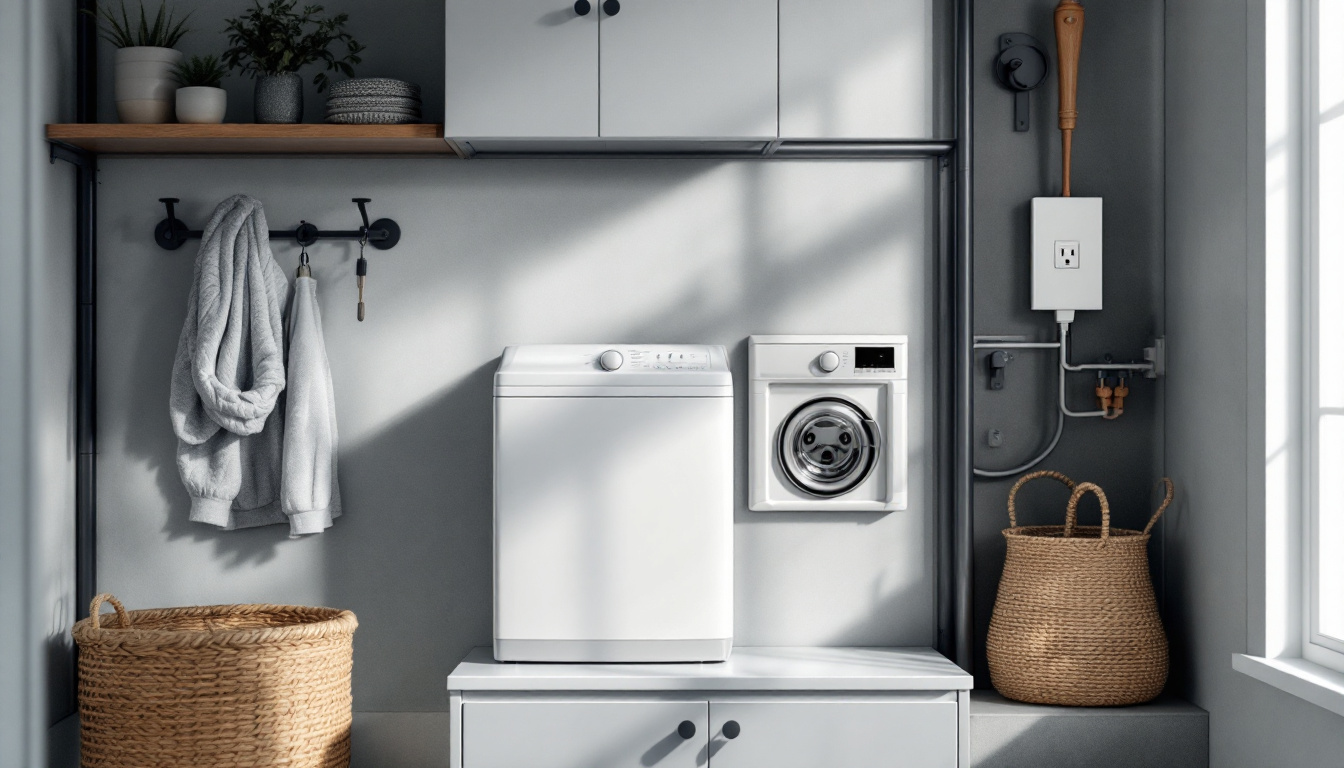
When it comes to installing electrical outlets for dryers, understanding the specific electrical requirements is crucial. Dryers typically require a dedicated circuit to handle the high amperage that they demand. Most residential dryers operate on either 240 volts or 120 volts, depending on the model and design. Knowing the voltage requirements is the first step in ensuring a safe and efficient installation.
In addition to voltage, the amperage rating is also important. Most electric dryers require a 30-amp circuit, which necessitates the use of appropriate wiring and circuit breakers. Failure to adhere to these specifications can lead to overheating, potential fire hazards, and equipment failure. Therefore, it is essential for lighting contractors to familiarize themselves with the National Electrical Code (NEC) guidelines relevant to dryer installations. Understanding these codes not only ensures compliance but also promotes the safety of the household and the longevity of the appliance.
The selection of the correct circuit breaker is a critical factor in ensuring the safety and functionality of the dryer outlet. For most electric dryers, a double-pole circuit breaker rated for 30 amps is standard. This type of breaker not only provides the necessary amperage but also protects the circuit from overloads.
It is important to ensure that the circuit breaker is compatible with the electrical panel and meets local code requirements. Additionally, using a breaker that is too large can pose a risk, as it may not trip during an overload, leading to potential damage to the dryer or even fire hazards. Regular maintenance checks on the circuit breaker can help identify any signs of wear or malfunction, ensuring that it operates effectively when needed. Furthermore, homeowners should consider labeling the circuit breaker clearly to avoid confusion during emergencies or maintenance work, which can significantly enhance safety in the event of an electrical issue.
Wiring is another critical component when installing an electrical outlet for a dryer. The NEC specifies that a minimum of 10-gauge wire should be used for circuits supplying 30 amps. This ensures that the wiring can handle the load without overheating.
When running the wiring, it is essential to consider the distance from the electrical panel to the dryer location. Longer runs may require larger gauge wire to minimize voltage drop, which can affect the performance of the dryer. Proper installation techniques, such as securing wires and avoiding sharp bends, will also enhance safety and longevity. Additionally, using conduit or protective sheathing can help safeguard the wiring from physical damage and environmental factors, such as moisture or pests. It’s also advisable to check for any local codes that may dictate specific installation practices or materials, as these can vary by region and may have implications for safety and compliance.
With the electrical requirements understood, the next step is selecting the appropriate outlet type and installation techniques. The outlet must be designed to handle the specific voltage and amperage of the dryer, ensuring safe and efficient operation.
Most electric dryers utilize a NEMA 14-30R outlet, which is designed for 240-volt, 30-amp circuits. This outlet features four prongs, accommodating both the hot and neutral wires, as well as a ground wire. Understanding the various outlet types and their configurations is essential for any lighting contractor involved in dryer installations. It’s also important to note that there are different configurations of NEMA outlets, each serving distinct appliances and voltage requirements. Familiarizing oneself with these variations can prevent costly mistakes and ensure compliance with local electrical codes.
Outlet placement is a significant aspect of the installation process. The outlet should be positioned within reach of the dryer cord while allowing for adequate ventilation around the appliance. Typically, the outlet is mounted about 12 to 18 inches above the floor, which helps keep it accessible while minimizing the risk of damage from water or debris. In addition to height considerations, it is advisable to assess the layout of the laundry area. For instance, if the dryer is placed in a corner, the outlet should be positioned to avoid any potential obstruction from walls or shelving units, ensuring that the dryer can be pulled out for maintenance or repairs without difficulty.
Additionally, ensuring that the outlet is not obstructed by the dryer or surrounding structures is crucial. This allows for easy access for maintenance and reduces the risk of accidental disconnection during operation. Furthermore, considering the overall flow of the laundry space can enhance both functionality and aesthetics. Strategically placing the outlet can also facilitate the use of other appliances, such as washers or utility sinks, creating a more efficient workflow in the laundry area.
Securing connections is vital for both safety and functionality. All wiring connections should be made using appropriate wire nuts or terminal blocks, ensuring that the connections are tight and secure. Loose connections can lead to arcing, overheating, and ultimately, failure of the outlet or the dryer itself. In addition to using the right materials, it is also essential to follow best practices for wire stripping and connection techniques, as improper handling can compromise the integrity of the electrical system.
Furthermore, it is essential to ensure that the ground wire is properly connected to the outlet and the electrical panel. This provides a safe path for electrical faults, reducing the risk of shock or fire hazards. Regular inspections of the outlet and the connections can help identify any wear or damage over time, allowing for timely repairs or replacements. Additionally, utilizing a circuit tester after installation can confirm that the outlet is functioning correctly, providing peace of mind that the dryer will operate safely and efficiently for years to come.
Safety should always be a priority when installing electrical outlets for dryers. Compliance with local codes and regulations is not just a legal obligation; it is also a critical aspect of ensuring the safety of the installation.
Lighting contractors should be familiar with the NEC and any local amendments that may apply. This knowledge will help ensure that all installations meet the necessary safety standards and reduce the risk of accidents or injuries.
After the installation is complete, testing and verification are essential steps to ensure that the outlet is functioning correctly. Using a multimeter, contractors can check the voltage and amperage at the outlet to confirm that it meets the required specifications.
Additionally, testing the ground connection is crucial. A ground fault circuit interrupter (GFCI) can be used to ensure that the outlet is properly grounded and that there are no faults in the wiring. This step is vital for preventing electrical shocks and ensuring the safety of the appliance.
Once the installation is complete and verified, educating homeowners about the proper use and maintenance of the dryer outlet is essential. Homeowners should be informed about the importance of not overloading the circuit and the signs of potential issues, such as flickering lights or tripped breakers.
Providing homeowners with information on routine maintenance, such as checking for lint build-up and ensuring proper ventilation, can also enhance the safety and efficiency of the dryer. This proactive approach can help prevent problems before they arise, ensuring a longer lifespan for both the dryer and the electrical system.
Even experienced lighting contractors can encounter pitfalls during the installation of dryer outlets. Being aware of common mistakes can help ensure a successful installation and avoid costly rework.
One common mistake is underestimating the importance of a dedicated circuit. Sharing a circuit with other appliances can lead to overloads and tripped breakers, causing inconvenience and potential damage. Ensuring that the dryer has its own circuit is essential for optimal performance.
Neglecting local codes and regulations can lead to serious consequences, including fines and safety hazards. It is crucial for lighting contractors to stay informed about any changes to local electrical codes and ensure that all installations comply with these standards.
Regularly reviewing local codes and attending training sessions can help contractors stay up-to-date and provide the safest installations possible. This diligence not only protects the contractor but also enhances their reputation in the industry.
Another common oversight is ignoring the ventilation needs of the dryer. Proper ventilation is essential for the efficient operation of the dryer and to prevent lint build-up, which can pose a fire hazard. Contractors should ensure that the dryer vent is installed correctly and that it leads to the outside of the home.
Additionally, educating homeowners about the importance of regular vent cleaning can help maintain the efficiency of the dryer and reduce the risk of fire. This proactive approach can lead to satisfied customers and fewer service calls.
Installing an electrical outlet for a dryer requires careful planning, attention to detail, and adherence to safety standards. By understanding the electrical requirements, selecting the right components, and following best practices, lighting contractors can ensure successful installations that meet the needs of homeowners.
From choosing the appropriate circuit breaker and wiring to ensuring compliance with local codes, each step in the process is critical. Additionally, educating homeowners about proper usage and maintenance can enhance safety and efficiency, leading to satisfied customers and a solid reputation in the industry.
By avoiding common mistakes and prioritizing safety, lighting contractors can excel in their installations and contribute to the overall safety and functionality of electrical systems in homes. This commitment to excellence not only benefits the contractor but also enhances the quality of service provided to clients.
Ready to elevate your electrical installations with the best lighting products on the market? Look no further than LumenWholesale for all your contractor needs. Our spec-grade lighting products are designed to meet the highest industry standards, ensuring your projects shine with reliability and performance. With unbeatable wholesale prices and the convenience of free shipping on bulk orders, you can trust LumenWholesale to provide exceptional value without hidden fees. Don’t compromise on quality or cost—Wholesale Lighting at the Best Value is just a click away. Equip yourself with the finest lighting solutions today and make every installation a glowing success.

Discover how UV light boxes can transform your lighting business with increased efficiency and profitability.

Discover how the Wire Pulling Pluckker is revolutionizing modern lighting solutions with its innovative design and efficiency.

Discover how incorporating lamp post outdoor lights can enhance your business as a lighting contractor.

Discover essential tips for selecting durable shop work lights that stand the test of time.